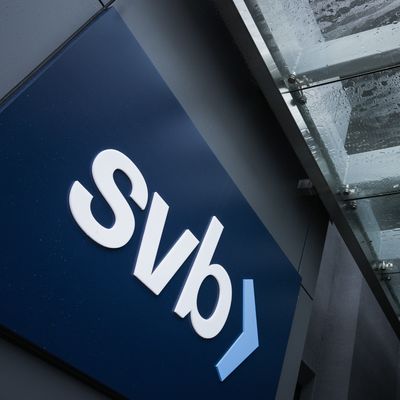
U.S. regulators are rolling out emergency measures to reinforce the banking system in the panicked aftermath of the sudden collapse of Silicon Valley Bank following an unprecedented bank run by depositors late last week. The sweeping measures include expanding protection for all deposits at SVB and another bank, Signature Bank, which New York regulators shut down on Sunday. Below, what we know about this still developing story.
What did the U.S. announce?
The Federal Reserve, Treasury Department, and Federal Deposit Insurance Corporation announced in a joint statement on Sunday night that Silicon Valley Bank and Signature Bank had been designated systemic risks to the entire financial system, that a new bank-deposit-insurance fund for U.S. banks had been created, and that all depositors at the two banks would be made whole.
“Today we are taking decisive actions to protect the U.S. economy by strengthening public confidence in our banking system,” the agencies said. “This step will ensure that the U.S. banking system continues to perform its vital roles of protecting deposits and providing access to credit to households and businesses in a manner that promotes strong and sustainable economic growth.”
The Federal Reserve Board emphasized that “the capital and liquidity positions of the U.S. banking system are strong and the U.S. financial system is resilient,” and also that it “is prepared to address any liquidity pressures that may arise.”
SVB depositors “will have access to all of their money” as of Monday morning, the joint statement said, though “shareholders and certain unsecured debtholders will not be protected” at the two banks — which means equity and bondholders at the banks will still be wiped out.
Prior to these measures, insured SVB and Signature Bank depositors would have had guaranteed access to only up to $250,000, the maximum amount insured by the FDIC. A large number of SVB depositors reportedly had accounts well over that limit.
Biden: “The banking system is safe.”
President Biden addressed the emergency measures on Monday morning, seeking to reassure the public and markets that “Americans can have confidence that the banking system is safe. Your deposits will be there when you need them.”
Biden also called for banking regulators and Congress to strengthen banking regulations to “to make it less likely this kind of bank failure would happen again,” while emphasizing that the failed banks’ investors would not be protected and that their executives would be held to account for any irresponsible actions that led to the banks’ demise.
Is this another taxpayer-funded government bailout?
Regulators claimed that “no losses associated with the resolution of Silicon Valley Bank will be borne by the taxpayer.” Deposits at the two banks will be backstopped by a pool of money paid into by U.S. banks, according to Treasury Secretary Janet Yellen.
U.S. officials are insisting that the emergency measures don’t constitute a bailout, stressing that they acted to protect depositors and the banking system, not the companies or their executives and shareholders. How that framing plays out politically for the Biden administration remains to be seen.
What is this new emergency-loan program for banks?
The Fed said in a statement on Sunday that it was creating a new lending program to help reduce liquidity pressures at U.S. banks and reinforce depositor confidence. The Bank Term Funding Program (BTFP) will provide “additional funding to eligible depository institutions to help assure banks have the ability to meet the needs of all their depositors.”
The funding will come in the form of “loans of up to one year in length to banks, savings associations, credit unions, and other eligible depository institutions pledging U.S. Treasuries, agency debt and mortgage-backed securities, and other qualifying assets as collateral.”
One problem Silicon Valley Bank faced before its demise was unrealized losses on its government securities after they fell in value amid rising interest rates. The new Fed program will offer more flexibility, lending up to the security’s original value.
The Washington Post reports that Fed officials “declined to provide a specific figure for the size of that new loan program, but made clear it would be large enough to cover trillions of dollars in potential requests.”
The lending program will have a $25 billion backstop taken from the Treasury Department’s exchange-stabilization fund, the Fed said, but it added that it “does not anticipate that it will be necessary to draw on these backstop funds.”
What prompted the move, and were there any other options?
As fears of a wider panic and banking crisis grew over the weekend, U.S. regulators reportedly worked to come up with a way to stave off more bank runs as those fears played out in the coming days. The government’s preferred option was to find a buyer for Silicon Valley Bank, according to the Washington Post. The FDIC put SVB up for auction on Saturday and hoped a final bidder would emerge by Sunday, but it appears that didn’t happen.
As the New York Times notes, over the weekend, U.S. officials, economists, and other financial-system experts worried that, come Monday, account holders with deposits beyond the FDIC insured maximum at other banks with similar profiles to Silicon Valley Bank, having seen what happened to SVB, would begin withdrawing their money and moving it to larger, theoretically safer banks. That could have prompted a cascade of additional bank runs that destabilized more financial institutions and led to a larger crisis for the financial system and economy. Biden-administration officials have also stressed that immediate action was needed to avoid potential payroll disruptions stemming from the collapse of SVB. (Vox Media, which owns New York, is among SVB’s depositors.)
Regulators are hoping that the emergency measures enacted Sunday — demonstrating that the U.S. is prepared to act to protect depositors as it has with SVB and Signature Bank clients, in addition to the creation of the new emergency-lending program to reinforce other banks — will be enough to prevent further chaos.
This post has been updated throughout.






























